Navigating 2nd Passover reveals a tale of inclusivity and second chances in biblical times, beckoning a deeper dive into its enduring significance.
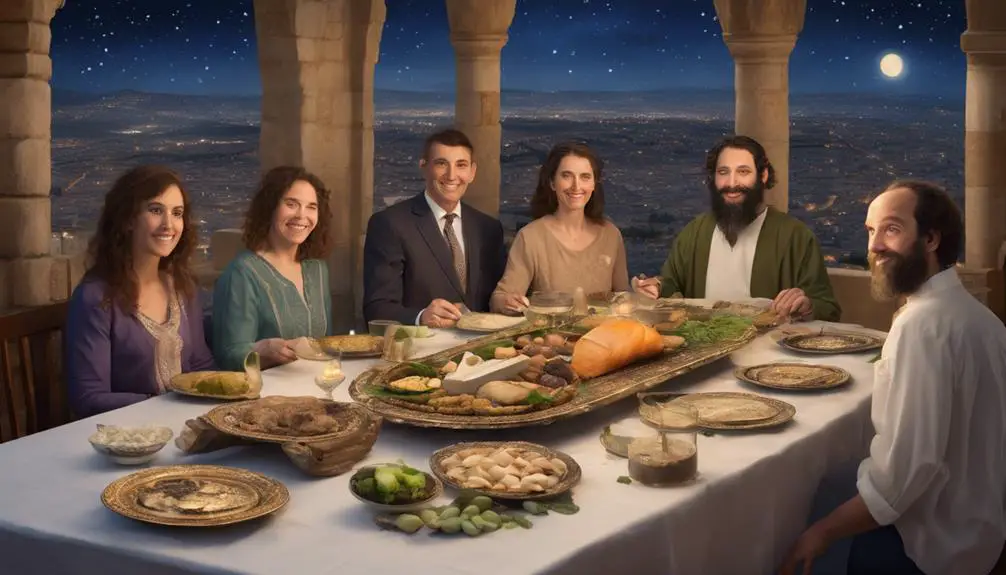
2nd Passover in the Bible
Navigating the historical and spiritual landscape of the 2nd Passover is like uncovering a hidden chapter in a well-thumbed book, offering insights that might surprise you.
You've probably heard about the primary Passover, commemorating the Israelites' exodus from Egypt. However, the 2nd Passover, detailed in Numbers 9:10-11, serves as an emblem of compassion and inclusivity, allowing those who were unable to participate in the first observance a second chance.
This aspect raises intriguing questions about its rituals, themes, and how they resonate today. Let's explore the layers and implications of this lesser-known celebration, understanding why it holds significant modern relevance.
Key Takeaways
- The 2nd Passover provides a chance for those who missed the initial observance to participate, emphasizing inclusivity and compassion in Judaic law.
- Originating from Torah provisions, it showcases the flexibility of Mosaic Law to accommodate unforeseen circumstances and ensure community participation.
- Rituals of the 2nd Passover, including traditional foods and ceremonial cleaning, symbolize purification, preparation, and connection to heritage.
- The observance underscores themes of redemption, second chances, and the importance of community, reflecting broader lessons of resilience and spiritual growth.
Origins of 2nd Passover
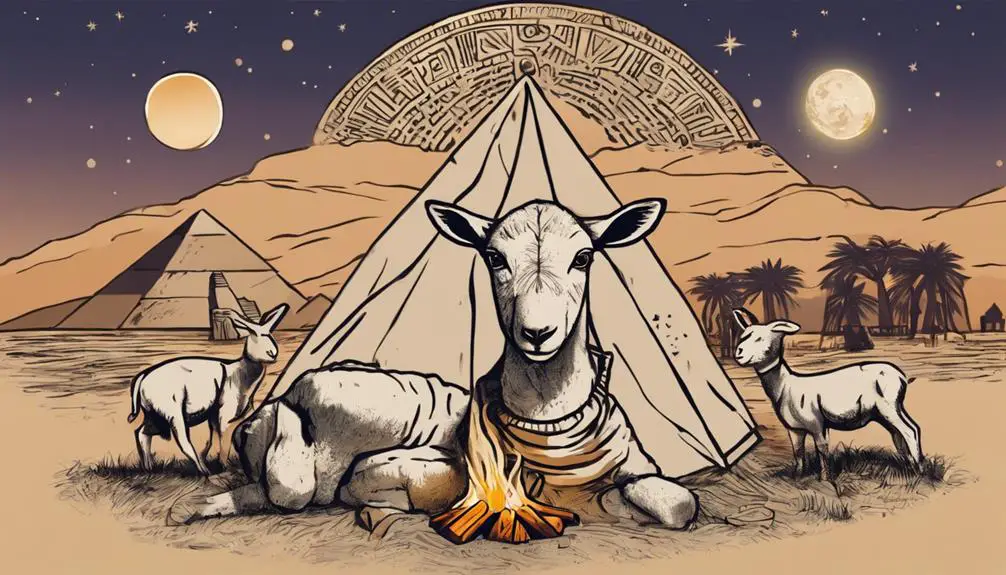
The origins of the Second Passover, or Pesach Sheni, trace back to a unique provision in the Torah allowing those who were impure or on a distant journey during the first Passover to observe it a month later. This accommodation underscores the inclusivity and flexibility within the Judaic legal framework, aiming to ensure that no individual is excluded from participating in such a pivotal observance due to circumstances beyond their control.
However, examining the historical underpinnings of Pesach Sheni reveals intriguing historical discrepancies and calendar variations that have shaped its observance.
Scholars have noted that the implementation of Pesach Sheni hasn't been uniform, influenced by evolving interpretations of Torah law, geographical spread of Jewish communities, and the integration of diverse calendrical systems. The discrepancies primarily arise from how different communities have understood and applied the concept of 'impurity' and 'distant journey,' leading to variations in practice.
Additionally, the adaptation of the Jewish calendar over centuries, transitioning from observational to fixed, has further complicated the alignment of Pesach Sheni with the annual cycle, introducing a layer of complexity to its observance that continues to prompt scholarly discussion. These elements collectively highlight the dynamic interplay between religious tradition, historical evolution, and communal practice in maintaining the relevance and significance of Pesach Sheni.
Biblical Context and References
Delving into the biblical context and references of Pesach Sheni, you'll find its origins explicitly mentioned in Numbers 9:6-13, where directives accommodate those unable to observe the initial Passover. This accommodation showcases the flexibility within the Mosaic Law, emphasizing inclusivity and compassion over strict adherence to dates. It's a profound example of adaptability in religious observance, reflecting a deeper understanding of human limitations and the importance of community participation.
Analyzing this passage, you'll appreciate the historical accuracy and cultural significance embedded within these verses. The scripture not only records a specific event but also serves as a timeless guideline for addressing unforeseen circumstances that prevent religious observance. This narrative, while ancient, underscores the enduring nature of faith practices that adapt to human needs, emphasizing the cultural significance of maintaining spiritual duties even when traditional timelines can't be met.
Furthermore, the inclusion of Pesach Sheni within the biblical canon highlights the meticulous nature of religious texts in preserving historical accuracy. It attests to the careful consideration of diverse life scenarios affecting believers, illustrating a holistic approach to spiritual devotion. This passage, thus, enriches our understanding of ancient practices and their lasting impact on contemporary observance.
Rituals and Observances
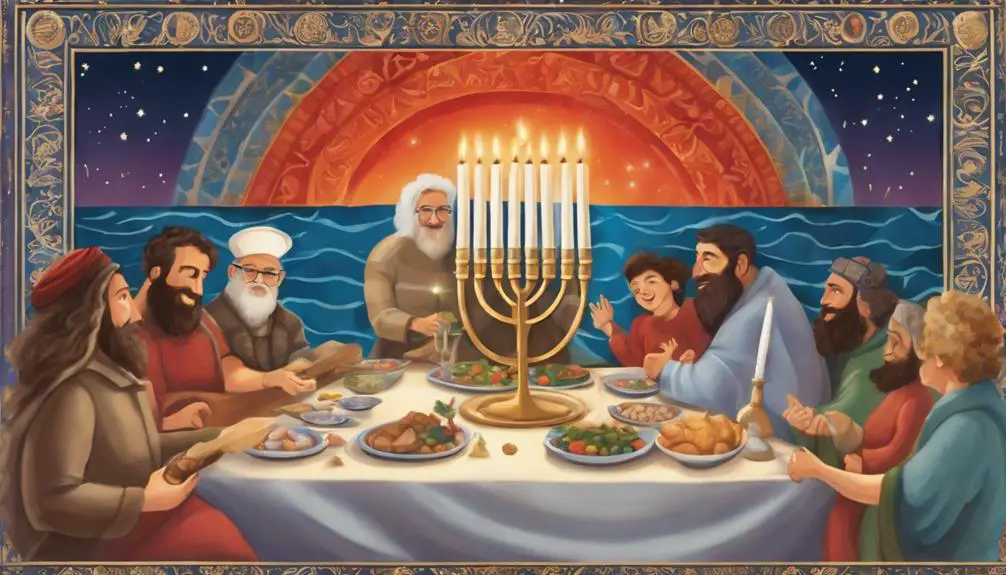
Reflecting on the biblical context and references of Pesach Sheni brings us to the concrete practices, rituals, and observances that define this unique day. Integral to Pesach Sheni are the traditional foods and ceremonial cleaning, aspects that are deeply rooted in historical and religious significance. These elements not only serve to commemorate the event but also to reinforce the communal and spiritual connections among participants.
The following table offers an overview of key rituals and practices associated with Pesach Sheni:
Aspect |
Description |
Significance |
|---|---|---|
Traditional Foods |
Lamb, unleavened bread, and bitter herbs |
Symbolizes the offerings and hardships of ancestors |
Ceremonial Cleaning |
Removal of leaven from homes |
Represents purification and preparation |
Ritual Recitations |
Specific prayers and readings |
Connects participants with their heritage and divine |
Community Gathering |
Collective observance of rituals |
Strengthens communal bonds and shared faith |
Reflection & Learning |
Discussions on the themes of Pesach Sheni |
Encourages spiritual growth and understanding |
Analyzing these practices reveals the depth of commitment to maintaining a connection to ancestral traditions and the emphasis on spiritual cleanliness and community cohesion. Each aspect of the observance of Pesach Sheni is meticulously designed to foster an environment of reverence, reflection, and renewal.
Themes of Compassion and Inclusivity
At the heart of Pesach Sheni lies a profound message of compassion and inclusivity, inviting all, regardless of their circumstances, to partake in the observance. This second chance at celebrating Passover embodies principles that extend far beyond religious mandates, touching upon core aspects of cultural adaptation and social justice. It emphasizes the importance of community and belonging, ensuring that no one is left behind due to impurity or distance, which were legitimate reasons for missing the initial Passover.
- *A traveler far from home, symbolizing those physically distant yet spiritually yearning for connection.*
- *An individual impure from contact with the dead, representing the inclusion of those deemed 'unfit' by societal norms.*
- *The welcoming of non-Israelites who wish to observe Passover, highlighting cultural adaptation and acceptance.*
- *A communal meal that binds disparate individuals into a unified whole, embodying social cohesion.*
- *The provision of a second chance, illustrating the theme of redemption and the belief in the capacity for change.*
These elements not only enrich the tapestry of Pesach Sheni but also serve as a beacon for contemporary issues of inclusivity and social justice. They encourage a reflection on how communities can adapt cultural practices to be more inclusive, fostering a sense of belonging for all.
Modern Relevance and Practices

In today's rapidly evolving society, Pesach Sheni's lessons of inclusivity and second chances hold significant relevance, guiding both individual behaviors and community practices. This ancient observance has found new life through cultural adaptation, becoming a springboard for interfaith discussions and a model for integrating ancient traditions into the modern world.
Aspect |
Traditional Practice |
Modern Adaptation |
|---|---|---|
Inclusivity |
Offering a second chance to those who were unclean or on a distant journey during Pesach. |
Extending the spirit of second chances to broader societal and personal contexts, promoting forgiveness and inclusion. |
Observance |
Sacrificing a lamb and eating unleavened bread and bitter herbs. |
Adapting rituals to fit contemporary life, including symbolic meals shared in interfaith gatherings to foster understanding. |
Community |
A communal observance within the Jewish community. |
Utilizing the theme to engage in community service, dialogue, and cultural exchange, emphasizing the universal need for compassion and second chances. |
Analyzing these practices demonstrates a dynamic interplay between preservation and innovation. The core values of Pesach Sheni, while rooted in specific historical and religious contexts, offer universal lessons that resonate across cultures and beliefs, exemplifying the power of cultural adaptation and the importance of interfaith discussions in fostering a more inclusive society.
Frequently Asked Questions
What Are the Main Differences Between the Traditional Passover and the 2nd Passover in Terms of Dietary Restrictions?
When comparing traditional Passover with its counterpart, you'll notice significant differences in dietary restrictions. Primarily, you're required to avoid leavened products during the initial celebration, a practice rooted in historical origins symbolizing haste and purity.
However, during the second observance, these restrictions might be less stringent or interpreted differently, depending on various traditions and interpretations. This flexibility allows for a broader participation, reflecting on the inclusivity of the observance.
How Do Various Jewish Denominations Interpret and Practice 2nd Passover Differently?
Just as a garden flourishes with a variety of flowers, Jewish denominations interpret and practice the Second Passover with notable differences.
Ritual variations manifest across communities, ranging from strict adherence to leniencies in observance.
Community engagement also varies, with some emphasizing educational components and others focusing on inclusivity.
Analyzing these practices offers a detailed view into the rich tapestry of Jewish life, showcasing how tradition and modernity intertwine within the framework of an ancient festival.
Are There Any Specific Prayers or Blessings Unique to 2nd Passover That Aren't Part of the Standard Passover Observances?
You're exploring if there are unique prayers or blessings for the observance that differ from standard Passover rituals.
When examining prayer timing and blessing origins, it's crucial to understand that while the core rituals remain consistent, specific recitations or blessings exclusive to this observance aren't typically found.
The emphasis lies more on the intent and timing rather than introducing new prayers, aligning with a traditional, unified approach across different observances.
How Does the Concept of 2nd Passover Influence Interfaith Dialogue and Understanding, Particularly With Religions That Have Similar Concepts of Forgiveness and Second Chances?
Exploring forgiveness rituals in interfaith dialogues, you'll find that the concept of a second chance, similar to 2nd Passover, plays a pivotal role. It fosters deeper understanding and respect among different faiths, especially those with parallel traditions of forgiveness and renewal.
When these principles are shared in interfaith celebrations, they bridge cultural gaps, encouraging a unified approach to compassion and empathy. This mutual recognition enriches spiritual connections and promotes a more inclusive world view.
Can Individuals Who Are Not Jewish, but Are Interested in the Teachings and Practices, Participate in 2nd Passover Rituals, and if So, How?
If you're curious about participating in rituals from a faith you don't belong to, it's vital to approach with sensitivity to avoid cultural appropriation.
In terms of interfaith participation, you can engage by seeking guidance from those within the Jewish community. They can offer insights on respectful ways to learn without overstepping.
Conclusion
In essence, the 2nd Passover epitomizes compassion, inclusivity, and a divine second chance. This ancient observance, rooted in biblical narratives, transcends time, urging modern practitioners to embrace its profound themes.
Through its rituals, you're reminded of the enduring human quest for redemption and belonging. Anaphora, in its repetition, underscores this: every year, every soul, every chance to renew.
Analytically, the 2nd Passover not only preserves history but actively shapes contemporary spiritual landscapes, fostering a culture of perpetual grace and unity.

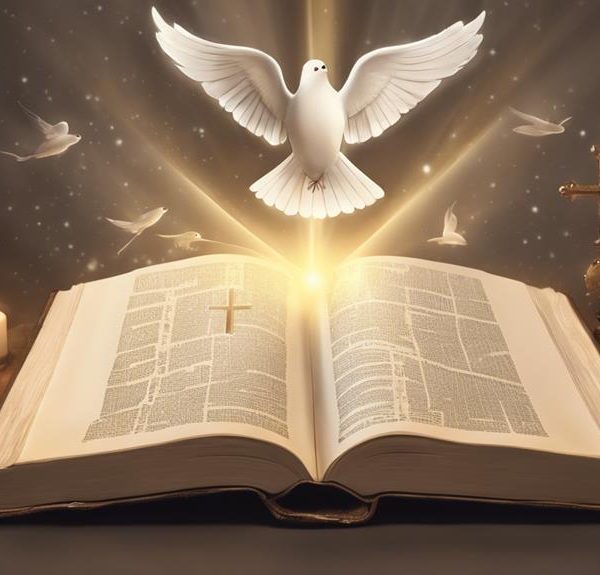
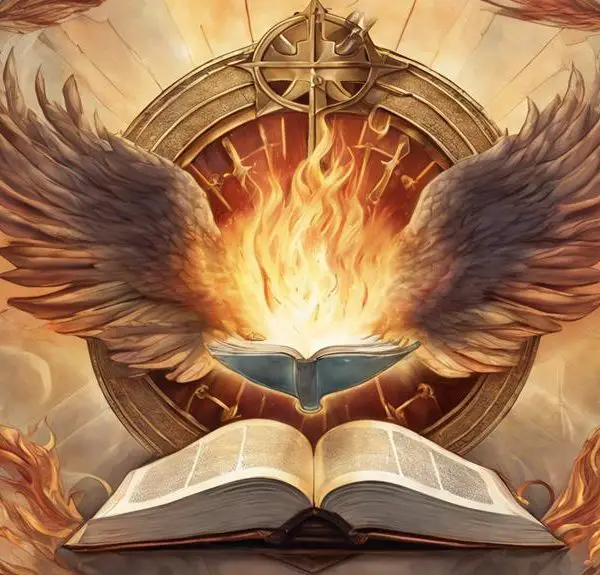
Sign up